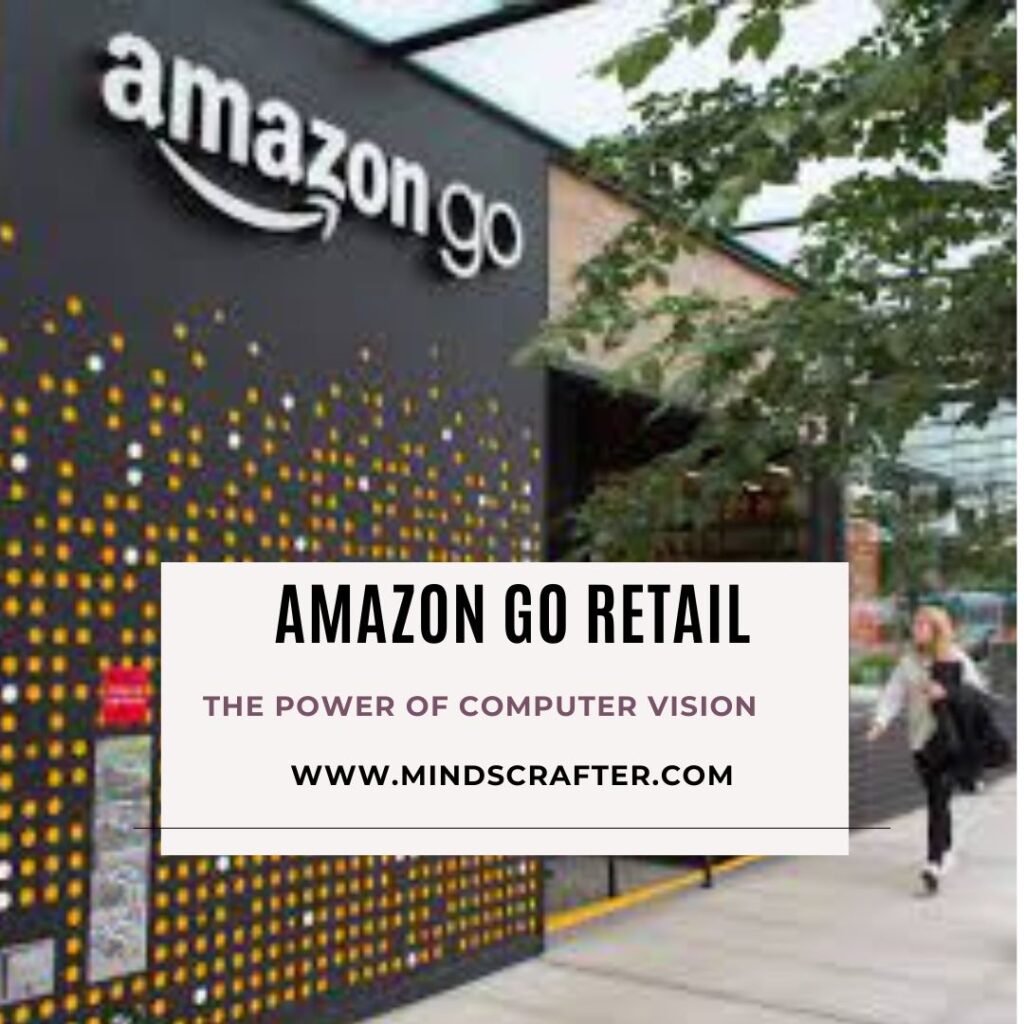The Future of Retail: How Amazon Go’s Revolutionary Stores are Taking Over Prime Locations
Amazon Go’s revolutionary stores have been making waves in the rapidly evolving retail landscape and grabbing prime locations by storm. With their innovative cashier-less technology and seamless shopping experience, they are paving the way for the future of retail and emergence of computer vision.
Brand Voice: “Modern and forward-thinking”
Step into an Amazon Go store, and you’ll instantly be transported into a shopping experience like no other. With no lines, no checkouts, and no hassle, these stores are revolutionizing the way people shop. Using cutting-edge technology such as computer vision, sensor fusion, and deep learning algorithms, Amazon Go allows customers to grab what they want and go simply.
These futuristic stores are strategically placed in prime locations, maximizing convenience for busy urban dwellers. Whether it’s a quick lunch or a full grocery run, Amazon Go has it covered. The seamless blend of technology and convenience has made these stores a hit among consumers, who are flocking to experience the next retail level.
As the future unfolds, it’s clear that Amazon Go’s innovative approach to shopping is here to stay. Their stores are redefining the retail landscape, and other industry players are sure to take note. Stay tuned as Mindscrafter explores the impact of Amazon Go and what it means for the future of retail.
Benefits and Advantages of Amazon Go Stores:
Amazon Go stores bring several benefits and advantages to the table. Firstly, eliminating checkout lines and cashiers allows for a frictionless shopping experience. Customers can simply walk in, grab what they need, and leave. This saves time and reduces the frustration often associated with traditional retail stores.
Secondly, Amazon Go stores utilize advanced technology to track customer purchases, eliminating the need for manual scanning or tagging of items. This not only speeds up the shopping process but also reduces errors and improves accuracy in inventory management.
Lastly, the strategic placement of Amazon Go stores in prime locations ensures accessibility and convenience for customers. Whether it’s a busy downtown area or a bustling shopping district, these stores are easily accessible to urban dwellers, maximizing convenience and meeting the demands of modern-day consumers.
How Amazon Go Stores Work:
At the heart of Amazon Go’s innovative stores is a combination of computer vision, sensor fusion, and deep learning algorithms. These technologies work together to create a seamless shopping experience.
When customers enter an Amazon Go store, they scan their unique QR code on their smartphone at the entrance. This code is linked to their Amazon account, allowing the store’s systems to identify the customer.
As the customer walks through the store, a network of cameras and sensors tracks their movements and the items they pick up. Advanced computer vision algorithms analyze the data, accurately detecting which items the customer has taken.
The customer is then charged for the items they leave the store with, and the amount is automatically deducted from their Amazon account. This cashier-less approach eliminates the need for traditional checkout counters, making the shopping experience faster and more convenient.
The Impact of Amazon Go on the Retail Industry:
Amazon Go’s entrance into the retail industry has significantly impacted both traditional brick-and-mortar stores and e-commerce giants. Traditional stores are now faced with the challenge of adapting to the changing expectations of customers who have experienced the convenience of Amazon Go.
The success of Amazon Go has also put pressure on e-commerce giants to rethink their strategies. While online shopping offers convenience, Amazon Go’s physical stores provide an immediate shopping experience that online platforms cannot replicate.
Furthermore, Amazon Go’s use of advanced technology has sparked an industry-wide interest in integrating similar solutions. Competitors and industry players invest in research and development to create their own cashier-less stores or improve existing shopping experiences.
Amazon Go vs. Traditional Brick-and-Mortar Stores:
The rise of Amazon Go has raised questions about the future of traditional brick-and-mortar stores. Some argue that the convenience and efficiency of Amazon Go stores will render traditional stores obsolete.
However, brick-and-mortar stores still hold value. They provide a tactile shopping experience, allowing customers to physically interact with products before making a purchase. Additionally, these stores offer immediate fulfilment, allowing customers to take their purchases home immediately.
To stay competitive, traditional stores can learn from Amazon Go’s innovations and integrate technology to enhance the shopping experience. Traditional stores can bridge the gap between the physical and digital realms by leveraging technology such as self-checkout stations and personalized recommendations.
Challenges and Limitations of Amazon Go Stores:
While Amazon Go stores offer a cutting-edge shopping experience, they have challenges and limitations. One of the main challenges is scaling the technology to handle larger crowds and higher volumes of transactions. As the popularity of Amazon Go grows, ensuring a seamless experience for all customers becomes crucial.
Another limitation is the reliance on smartphones and the need for customers to have an Amazon account. This may exclude certain demographics or individuals who prefer not to use smartphones. Addressing these limitations will be essential for Amazon Go to reach a wider customer base.
Lastly, the cost of implementing and maintaining the technology required for Amazon Go stores can be a barrier for smaller retailers. The initial investment and ongoing expenses may outweigh the benefits for some businesses, making it difficult to adopt similar models.
Expansion Plans and Future Developments of Amazon Go:
With the success of their initial stores, Amazon Go has ambitious expansion plans. They aim to open more stores in prime locations across the globe, catering to the growing demand for convenience and seamless shopping experiences.
Additionally, Amazon Go is continuously investing in research and development to enhance its technology and improve the overall customer experience. They are exploring new ways to integrate artificial intelligence and machine learning to streamline the shopping process further and personalize recommendations.
As Amazon Go continues to expand and innovate, the retail industry as a whole will need to adapt to the changing landscape and find ways to stay competitive in this new era of retail.
How Retailers Can Adapt to the Changing Landscape:
To thrive in the future of retail, traditional retailers need to embrace technology and adapt their strategies. Here are a few ways retailers can adapt to the changing landscape:
1. Embrace online and offline integration: Retailers should create a seamless omnichannel experience, allowing customers to seamlessly switch between online and offline shopping. This can include features such as in-store pickup for online orders or the ability to browse and purchase products online while in-store.
2. Invest in personalized experiences: Leveraging customer data and advanced analytics, retailers can provide personalized recommendations and offers to enhance the shopping experience. By understanding customer preferences and behaviour, retailers can create tailored experiences that keep customers engaged and satisfied.
3. Integrate technology in-store: From self-checkout stations to interactive displays, retailers can leverage technology to streamline the shopping process and enhance the overall experience. By embracing technology, retailers can create a more efficient and convenient shopping environment.
4. Focus on customer service: While technology plays a crucial role, retailers should not forget the importance of excellent customer service. Well-trained staff who can provide personalized assistance and engage with customers can significantly build loyalty and customer satisfaction.
The Role of Technology in the Future of Retail:
Technology will continue to play a vital role in shaping the future of retail. From artificial intelligence and machine learning to augmented and virtual reality, retailers have a vast array of tools to enhance the shopping experience.
Advancements in technology enable retailers to understand better and predict customer behaviour, personalize recommendations, and optimize inventory management. Additionally, technology can bridge the gap between the physical and digital realms, creating a seamless omnichannel experience for customers.
As technology evolves, retailers embracing and leveraging these advancements will have a competitive edge in the ever-changing retail landscape.
Conclusion: The Potential Future of Retail with Amazon Go’s Innovative Model
Amazon Go’s revolutionary stores are undoubtedly shaping the future of retail. Their innovative approach to shopping, leveraging advanced technology, has disrupted the industry and forced other players to adapt.
Amazon Go stores offer numerous benefits and advantages, including a frictionless shopping experience, accurate inventory management, and prime location convenience. However, challenges and limitations, such as scalability and cost, must be addressed for wider adoption.
As the retail industry evolves, retailers must adapt to the changing landscape by integrating technology, embracing personalized experiences, and focusing on customer service. Technology will continue to play a crucial role, enabling retailers to create seamless omnichannel experiences and optimize operations.
The potential future of retail lies in a blend of online and offline integration, personalized experiences, and leveraging technology to enhance the overall shopping journey. With Amazon Go leading the way, the retail industry is poised for a transformative future where convenience and innovation reign supreme.


